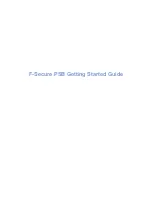
Pro Tools Reference Guide
874
Voice Usage and Total Latency for
RTAS Plug-ins
(Pro Tools HD Only)
With Pro Tools HD, the initial insert of an RTAS
plug-in may cause additional latency, and will
take up two additional voices per channel (one
voice for input and one voice for output) in the
following conditions:
• When inserted on an Auxiliary Input or
Master Fader track
• When inserted on an Instrument track that
does not contain an instrument plug-in
• When inserted after a TDM plug-in on any
kind of track
For example, the initial insert of an RTAS plug-
in on a mono Auxiliary Input track uses two
voices (one channel with two voices), while the
initial insert of that plug-in on a
stereo
Auxiliary
Input track uses four voices (two channels with
two voices each).
Subsequent RTAS plug-ins on the same track do
not take up additional voices unless a TDM
plug-in is inserted between other RTAS plug-ins.
Audio tracks that have active RTAS plug-in in-
serts cannot be explicitly voiced. The voice allo-
cation must be set to
Dynamic
or
Off
.
Furthermore, one additional voice is used for
each occurrence of any of the following condi-
tions when using voices for RTAS plug-ins on a
track:
• When you use the external key side-chain
of an RTAS plug-in on that track
• When you select multiple track outputs for
that track (one voice used for each output)
• When you select an AFL/PFL Path output in
the Output tab of the I/O Setup dialog (one
voice used for each channel)
Viewing Inserts
Both the Mix and Edit windows can be config-
ured to show or hide inserts A–E and F–J. Plug-in
windows provide complete access to plug-in
controls.
Avoid inserting TDM plug-ins between
RTAS plug-ins on any kind of track—this
causes unnecessary voice usage and may
cause additional latency.
When you use Pro Tools 6.9.x or lower to
open a session originally created with
Pro Tools 7 or later, any RTAS plug-ins in-
serted on Auxiliary Input or Master Fader
tracks—or after TDM plug-ins on any kind
of track—will become inactive.
Summary of Contents for Digidesign Pro Tools 8.0
Page 1: ...Reference Guide Pro Tools 8 0 ...
Page 18: ...Pro Tools Reference Guide xviii ...
Page 19: ...1 Part I Introduction ...
Page 20: ...2 ...
Page 24: ...Pro Tools Reference Guide 6 ...
Page 40: ...Pro Tools Reference Guide 22 ...
Page 45: ...27 Part II System Configuration ...
Page 46: ...28 ...
Page 58: ...Pro Tools Reference Guide 40 ...
Page 76: ...Pro Tools Reference Guide 58 ...
Page 118: ...Pro Tools Reference Guide 100 ...
Page 127: ...109 Part III Sessions Tracks ...
Page 128: ...110 ...
Page 144: ...Pro Tools Reference Guide 126 ...
Page 170: ...Pro Tools Reference Guide 152 ...
Page 228: ...Pro Tools Reference Guide 210 ...
Page 292: ...Pro Tools Reference Guide 274 ...
Page 343: ...325 Part IV Playback and Recording ...
Page 344: ...326 ...
Page 386: ...Pro Tools Reference Guide 368 ...
Page 442: ...Pro Tools Reference Guide 424 ...
Page 443: ...425 Part V Editing ...
Page 444: ...426 ...
Page 490: ...Pro Tools Reference Guide 472 ...
Page 528: ...Pro Tools Reference Guide 510 ...
Page 566: ...Pro Tools Reference Guide 548 ...
Page 590: ...Pro Tools Reference Guide 572 ...
Page 591: ...573 Part VI MIDI ...
Page 592: ...574 ...
Page 648: ...Pro Tools Reference Guide 630 ...
Page 670: ...Pro Tools Reference Guide 652 ...
Page 679: ...661 Part VII Arranging ...
Page 680: ...662 ...
Page 756: ...Pro Tools Reference Guide 738 ...
Page 769: ...751 Part VIII Processing ...
Page 770: ...752 ...
Page 780: ...Pro Tools Reference Guide 762 ...
Page 786: ...Pro Tools Reference Guide 768 Figure 3 Quantized audio events Warp markers in Warp view ...
Page 814: ...Pro Tools Reference Guide 796 ...
Page 842: ...Pro Tools Reference Guide 824 ...
Page 843: ...825 Part IX Mixing ...
Page 844: ...826 ...
Page 976: ...Pro Tools Reference Guide 958 ...
Page 991: ...973 Part X Surround ...
Page 992: ...974 ...
Page 1000: ...Pro Tools Reference Guide 982 ...
Page 1025: ...1007 Part XI Sync and Video ...
Page 1026: ...1008 ...
Page 1080: ...Pro Tools Reference Guide 1062 ...
Page 1111: ......
















































